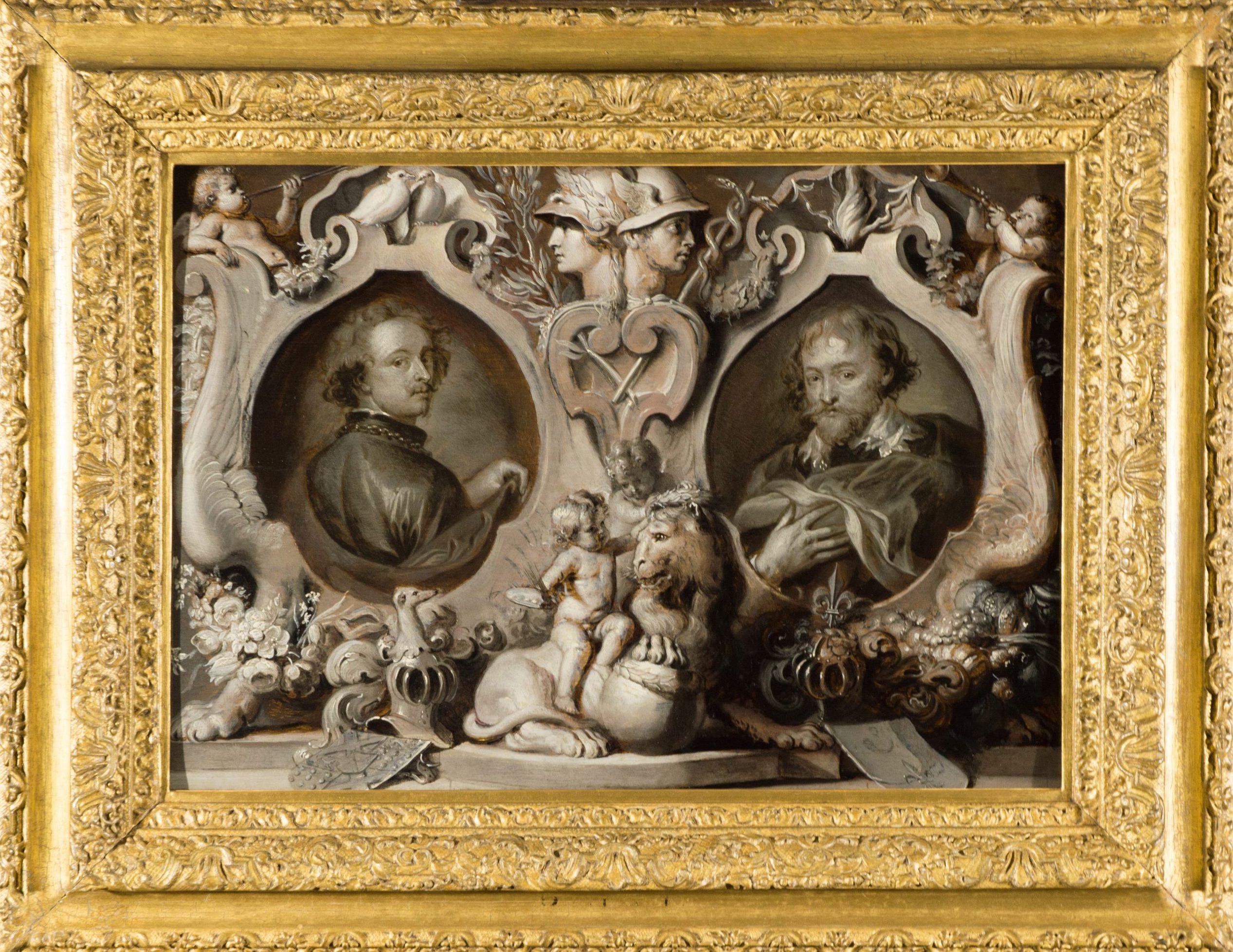
A painting of Peter Paul Rubens and Anthony van Dyck has gone back on display at Chatsworth House, a stately home in the East Midlands of England, 45 years after being stolen.
In 1979, the gray tone painting by the 17th-century Flemish artist Erasmus Quellinus II was on loan as part of an exhibition at Towner Art Gallery in Eastbourne when it was taken in what newspapers at the time called a “smash and grab” raid.
Chatsworth House, the seat of the Duke of Devonshire renowned for its English Baroque architecture and sumptuous grounds, assumed the Quellinus painting was gone for good. Then, in 2020, Belgian art historian Bert Schepers spotted that the painting was for sale at an auction house in Toulon, southern France. Schepers contacted Chatsworth House which was able to reclaim the painting in coordination with the Art Loss Register, a company that holds the world’s largest private database of stolen, missing, and looted art.
“It was over 40 years ago and it seemed very unlikely we were going to get the painting back,” said Charles Noble, Chatsworth’s curator of fine art. “It was a thrilling moment to actually have it back at Chatsworth and to be able to share it again with our visitors.”
The exterior of Chatsworth House. Photo courtesy Chatsworth House Trust.
Before going back on display, however, the painting had to be restored to “bring back some of its original brilliance,” Noble said. The two wooden panels comprising the painting had shifted and conservators noted some of the paint had flaked off. When examined under ultraviolet fluorescence, conservators observed nicotine stains marking areas of the panel. The consignor of the painting in Toulon had found it in their parent’s Eastbourne house and believes this damage may have occurred when the property was occupied by squatters.
Born into a prominent artistic Antwerp family, Quellinus was a pupil of Peter Paul Rubens and later one of his closest collaborators. The medallion of portraits of Van Dyck and Rubens features each artist’s coat of arms and is thought to have been painted primarily as an inspiration for making prints.
Noble believes it was acquired in the early 18th century by one of the first Dukes of Devonshire, who were serious art collectors. William Cavendish won the family title by seizing Derby and Nottingham for William of Orange during the Glorious Revolution of 1688.
“It is unusual to be able to trace a picture back so closely to the location of its theft over more than 40 years earlier,” said Lucy O’Meara, recoveries manager at the Art Loss Register. “We are delighted to have been able to secure its return to Chatsworth where it belongs, and this should give hope to others who are still seeking the return of pictures stolen decades ago.”
Chatsworth plans to put the painting on display at the National Galleries of Scotland later this year.